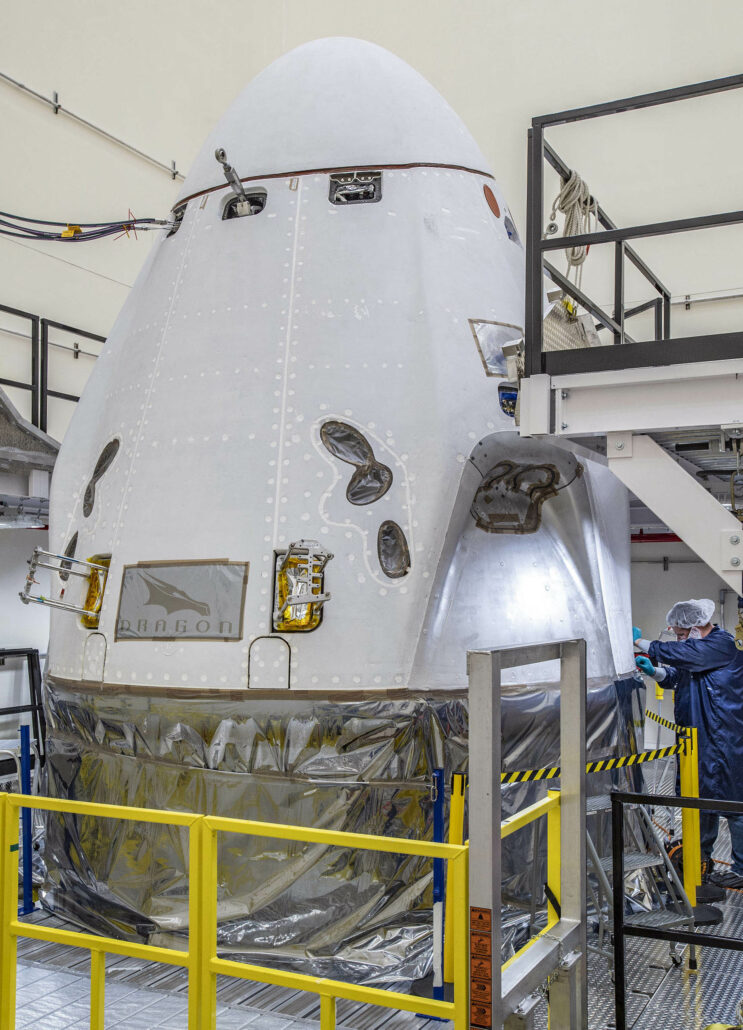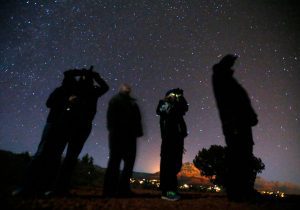SpaceX’s next astronaut launch was delayed due to a familiar issue

The fourth USSF GPS-III (GPS III-IV) satellite on top of the Falcon 9 Block 5 launch vehicle operating at SpaceX in the early morning of October 3, 2020. Image SpaceX
The National Aeronautics and Space Agency (NASA) announced in a blog that the launch of the upcoming Commercial Crew Program (CCP) to the International Space Station (ISS) will be delayed. Agency officials had previously planned to conduct the launch, at the end of this month, with the SpaceX Crew Dragon capsule spacecraft.
SpaceX Crew Dragon is now scheduled to launch in the first half of November
Today’s delay marks the second delay for the Crew 1 mission, which is scheduled to resume manned flights to the International Space Station from the United States. These flights are the first step in NASA and SpaceX efforts to build a sustainable commercial economy for Low Earth Orbit (LEO).
During launch mission briefings, NASA and SpaceX representatives expressed confidence in Crew Dragon. The capsule is an upgrade to the Cargo Dragon that SpaceX developed for NASA’s Commercial Resupply Services (CRS) program. Through cargo flights to the International Space Station, SpaceX helped reduce flight costs over international alternatives.
NASA said today that the delay is due to the propulsion system Falcon 9. The partially reusable launch vehicle is the backbone of SpaceX’s entire launch portfolio. Reusing its engines like NASA’s space shuttle, SpaceX is also conducting other cargo launches, including the company’s satellites for the Internet constellation Starlink with its Falcon 9.
The problem appeared in the gas generators of the Merlin 1D rocket engines of the launch vehicle. That didn’t happen on the NASA mission and SpaceX will use the extra time to test and review the system, according to the agency.
Despite still being a startup, SpaceX has set itself a strict schedule of launch rhythms as it competes with the big companies. Its manifesto consists of launching both the private and non-private sector. Both the company and the United Launch Alliance have experienced successive launch delays over the past few weeks.

SpaceX’s Crew Dragon spacecraft during assembly at the company’s facility at Cape Canaveral Air Force Station in Florida on October 2, 2020. Photo: NASA’s Commercial Crew Program Blog
The delay was attributed to testing the Falcon 9 engine component critical to ignition
During the review, SpaceX will study the Falcon 9 gas generator; An important part of Merlin 1D engines. The generator ensures that the engine’s combustion chamber receives compressed fuel from the tanks, and its start-up is the first stage of ignition of the launch vehicle. In SpaceX’s recent series of launch delays, the company discovered a similar problem with the Falcon 9, which carries the Space Force’s fourth GPS-III satellite.
SpaceX had to stop launching its Global Positioning System (GPS) on the third of this month due to pressure surges in the Falcon 9’s gas generator as well. This was revealed by Elon Musk on his Twitter page, where the CEO also acknowledged the daunting task that SpaceX faced due to her statement.
The new launch target for the Crew-1 mission isNo later than early to mid-November NASA reported in a post today. SpaceX is using a new Falcon 9 mission booster, which NASA will also use to guide astronauts on its second CCP mission. This mission will reuse the Dragon capsule that transported Henkin and Hurley astronauts to the International Space Station in May this year, to resume manned spaceflight from US soil.
In Crew-1, SpaceX and NASA will send four astronauts to the International Space Station, doubling the crew size over Benhken and Hurley’s Dragon Endeavor. The Crew-1 crew will complete a six-month science mission on the orbiting space station, fully testing the Dragon capsule’s endurance. The SpaceX rover was designed to last 210 days during docking with the International Space Station, with the solar panels meeting NASA predictions during the Beta 2 launch.
The Crew Dragon will also offer upgrades to its heat shield on the one that launched with the two astronauts earlier in 2020. After evaluating Crew Dragon’s post-launch, SpaceX stated that the vehicle Experienced heat shield corrosionChanges were introduced as a result Tested in NASA’s Arc Jet.
Cathy Louders, NASA’s associate director for NASA’s Human Exploration and Operations Directorate, also commented on the pace of SpaceX’s launch. She remained optimistic and commented:
“With the high tempo of missions SpaceX does, it really gives us incredible insight into this trading system and helps us make informed decisions about the state of our missions. Teams are actively working on this outcome on the engines, and we’re supposed to be smarter over the next week.”

Communicator. Reader. Hipster-friendly introvert. General zombie specialist. Tv trailblazer





